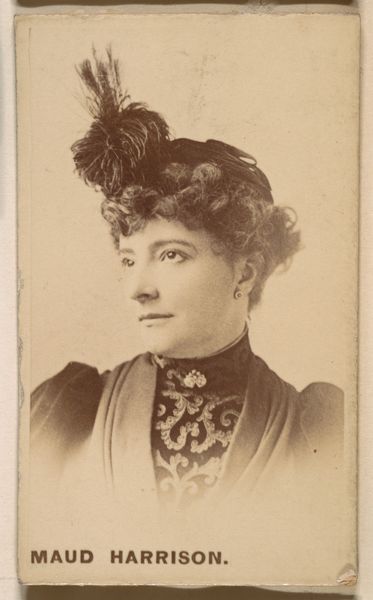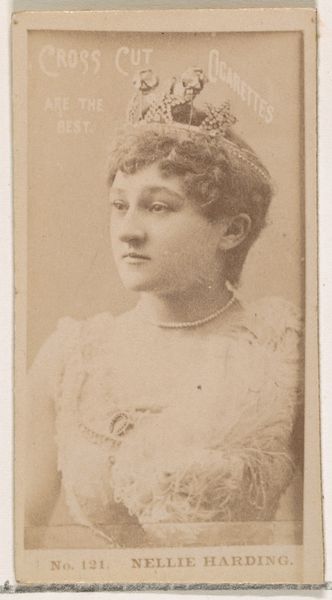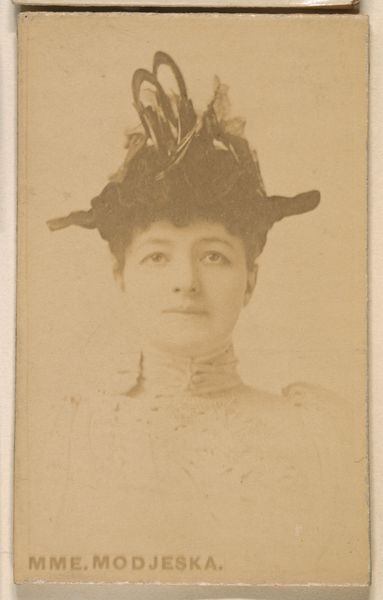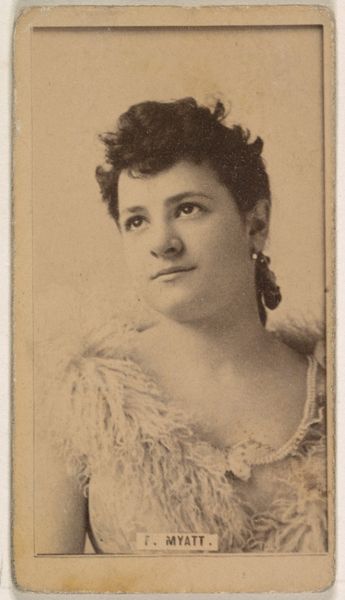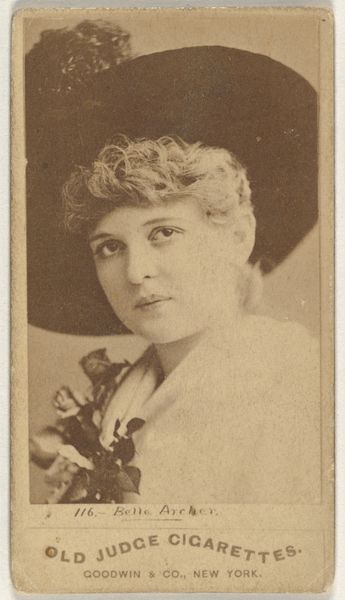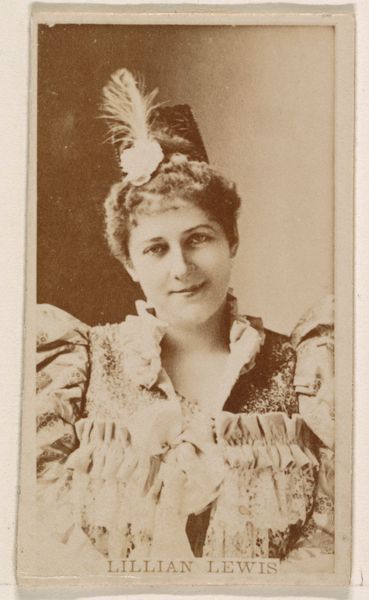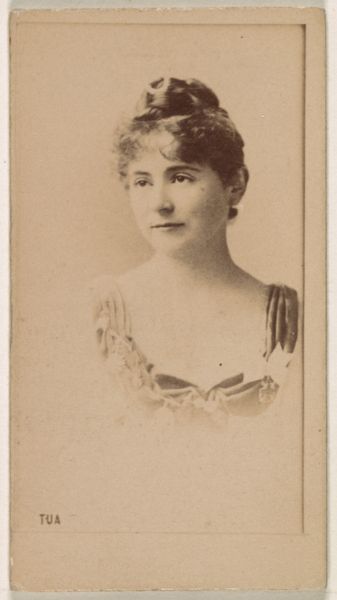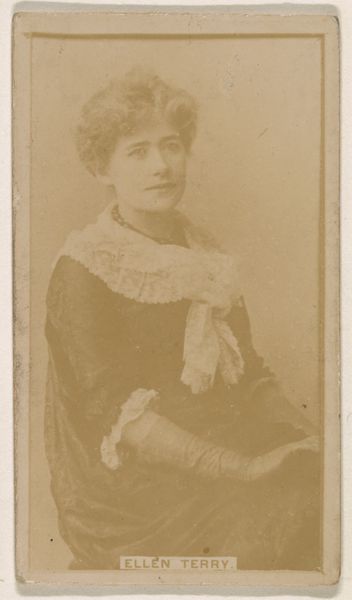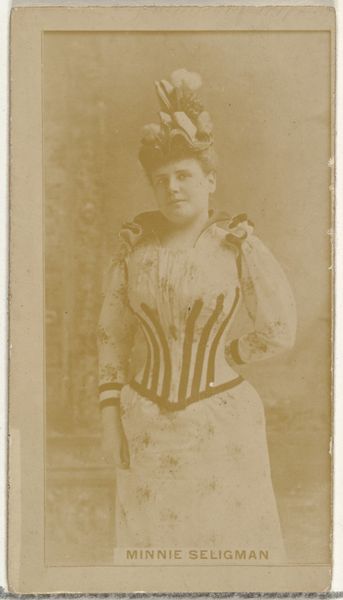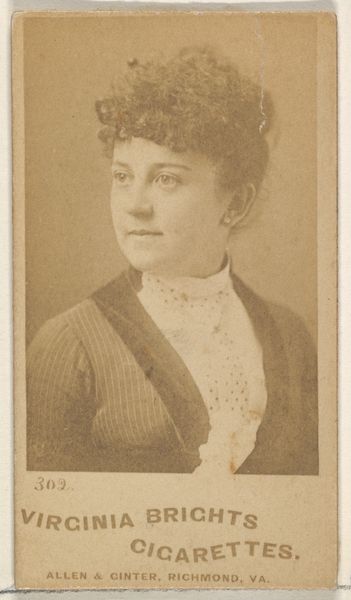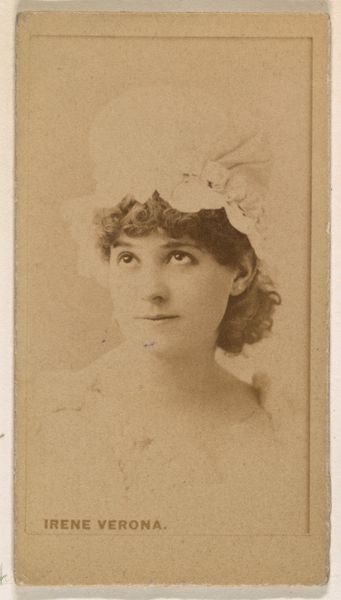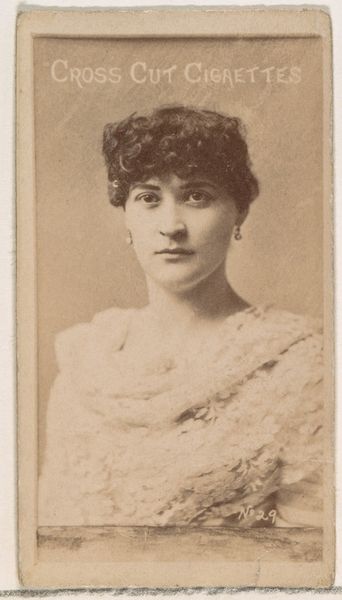
Lillian Russell, from the Actors and Actresses series (N145-8) issued by Duke Sons & Co. to promote Duke Cigarettes 1890 - 1895
0:00
0:00
drawing, print, photography, albumen-print
#
portrait
#
drawing
# print
#
photography
#
19th century
#
albumen-print
Dimensions: Sheet: 2 11/16 × 1 3/8 in. (6.8 × 3.5 cm)
Copyright: Public Domain
Editor: This is "Lillian Russell, from the Actors and Actresses series," dating from around 1890-1895, produced by W. Duke, Sons & Co. It looks like an albumen print. It’s interesting how photography was used here to promote cigarettes! What strikes you most about it? Curator: I immediately think of the commodification of beauty and fame. This print wasn't made for art's sake. It was a mass-produced advertisement, meant to be consumed and discarded. We have to consider the labour involved – the photographers, the printers, the factory workers packaging the cigarettes. Do you see how the albumen print, a specific material process, facilitates this widespread circulation? Editor: Absolutely. So, it’s less about Lillian Russell the person and more about her image as a marketing tool. How does the "drawing" aspect play into this material analysis? Curator: The drawing likely refers to the design and engraving used in the mass reproduction of the image. Consider how that mechanical process further distances us from Russell herself. It's all about replicating and distributing the image for profit. What’s interesting is thinking about who was buying these cigarettes – were they theatregoers who admired Russell or a broader demographic drawn in by her image? Editor: That makes me wonder about the audience and their relationship to both Russell and the Duke cigarettes. It’s not just a portrait; it's a complex interplay of celebrity, commerce, and material culture. Curator: Exactly. We're looking at the intersection of image production, consumerism, and social values in the late 19th century. Hopefully it illustrates how everyday objects can offer insights into a society’s priorities and how art can also be just part of material culture.
Comments
No comments
Be the first to comment and join the conversation on the ultimate creative platform.


